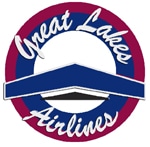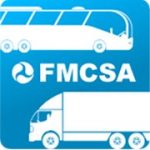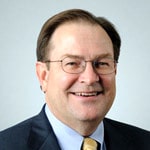
Read the complete story here.
Author: matrixsuperadmin

Read the entire story here.

The MTA’s inclusion of the U.S. Employment Plan in this latest purchase, as advocated by the group Jobs to Move America, could help support up to 33,165 U.S. jobs.
Read the entire story here.

FRA considers Fitbits and similar devices to be “personal electronic devices” that are subject to the restrictions in part 220. Per the definition of an “electronic device” at 49 CFR 220.5, they are an electronic device that performs functions not necessary for the health or safety of that person and entail the risk of distracting employees from safety-related tasks.
FRA understands some Fitbit devices are rather limited in their functionality. However, a number of different fitness tracking devices are available. The Fitbit Blaze, for example, has functions that include mobile playlists, call alerts, text alerts and fitness tracking. These functions are the same type of distracting functions that have caused railroad accidents and were the impetus for the restrictions contained in part 220.
The regulation text of part 220 does not distinguish between Fitbits that have limited functionality, and those that are more akin to smartphones or smartwatches. Unless a waiver granting an exemption for certain fitness tracking devices with limited functionality were issued by FRA in the future, the agency considers all such devices to be “personal electronic devices” that are subject to the restrictions in part 220. However, railroad operating employees are allowed the use of digital clocks or wristwatches whose primary function is to tell time.
Timepieces are commonly used in the railroad industry to verify the accuracy of a locomotive’s speed indicator. This function is safety-related in that it accurately allows a train crew to comply with relevant track speed limits during the course of a train’s movement. This exception is limited to those wristwatches that do not have functions which violate the requirements set forth under 220 subpart C. The Primary function of fitness tracking devices is not to tell time.
As stated in Title 49 CFR 220.303, a railroad operating employee shall not use an electronic device if that use would interfere with the employee’s or another railroad operating employee’s performance of safety-related duties. No individual in the cab of a controlling locomotive shall use an electronic device if that use would interfere with a railroad operating employee’s performance of safety-related duties.
The exceptions within 220 subpart C account for varying operating situations, with particular flexibility for railroad supplied devices.
The only exceptions within 220 subpart C are specially stated in § 220.309:
§ 220.309 Permitted uses; exceptions to other restrictions.
Notwithstanding any other limitations in this subpart, a railroad operating employee may use the following, if that use does not interfere with any employee’s performance of safety-related duties—
(a) The digital storage and display function of an electronic device to refer to a railroad rule, special instruction, timetable, or other directive, if such use is authorized under a railroad operating rule or instruction.
(b) An electronic device as necessary to respond to an emergency situation involving the operation of the railroad or encountered while performing a duty for the railroad.
(c) An electronic device to take a photograph of a safety hazard or a violation of a rail safety law, regulation, order, or standard, provided that—
- A camera that is part of a cell phone or other similar multi-functional electronic device is not included in this exception unless it is a railroad supplied device and is used for an authorized business purpose;
- The camera, unless otherwise permitted, is turned off immediately after the documentation has been made; and
- If the camera is used in the cab of a moving train, the use is only by a crewmember other than the locomotive engineer.
(d) A stand-alone calculator if used for an authorized business purpose.
(e) A medical device that is consistent with the railroad’s standards for medical fitness for duty.
(f) A wireless communication device to conduct train or switching operations if the railroad operating employee is part of a crew assigned to a train that is exempt under § 220.9(b) from the requirement of a working radio when the employing railroad has fewer than 400,000 annual employee work hours.
Additionally, railroads may impose more stringent requirements that are subject to change at the railroad’s discretion, without notice to FRA, and can vary from railroad to railroad.


A) Washington, DC, on Thursday, May 12, 2016, at the National Association of Home Builders, 1201 15th Street, NW, Washington, DC 20005;
B) Chicago, IL, on Tuesday, May 17, 2016, at the Marriott Courtyard Chicago Downtown/River North, 30 E. Hubbard Street, Chicago, IL 60611; and
C) Los Angeles, CA, on Wednesday, May 25, 2016, at the Westin Bonaventure Hotel and Suites, 404 S. Figueroa Street, Los Angeles, CA 90071.
All sessions will run from 10:00 a.m. to noon and 1:30 p.m. to 3:30 p.m., local time. If all interested parties have had the opportunity to comment, the sessions may conclude early. Click here to read the Federal Register notice.

The GOP has announced that it will fight a Department of Labor (DOL) rule requiring employers to report having hired third parties to draft and deliver anti-union messages to workers. The measure was announced by the DOL in the Federal Register March 24 and went into effect last week. The rule applies to all agreements and arrangements beginning on or after July 1. Representative Phil Roe (R-Tenn.) called for the elimination of the rule in a hearing Tuesday, April 26. Rep. Jared Polis (D-Colo.) said in his opening remarks that “working men and women deserve to know who their employer is hiring and how much the employer is spending to discourage them from joining a union.” Read more from Truthout. Click here to read about the DOL rule.



